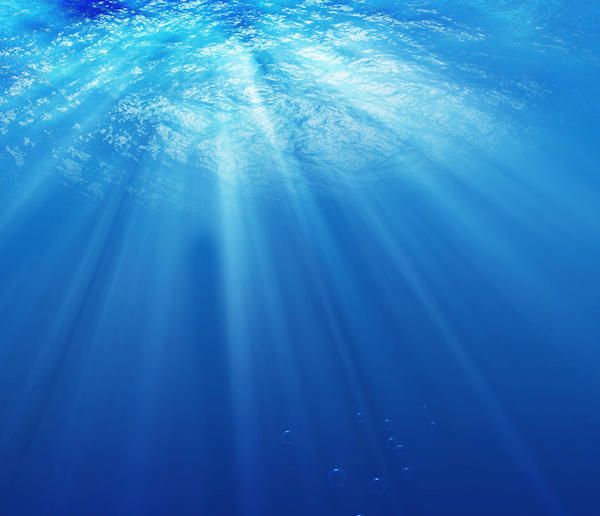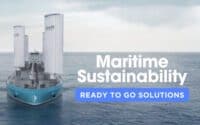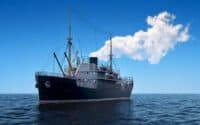One Sea Association: Steering the Future of Autonomous Shipping

In recent years, the maritime industry has been on the cusp of a transformative revolution – the advent of autonomous shipping projects. As technology continually advances, the vision of ships sailing the oceans without human intervention is moving closer to reality. Central to this evolution is the ambitious initiative known as the One Sea Association.
* Please send feedback/suggestions to editor @ shipuniverse.com
Background on Autonomous Shipping
Autonomous shipping is not just about removing the crew from a ship. It represents a fundamental rethinking of ship operations, management, and design. The autonomy levels in shipping can vary:
- Level 1: Basic automation of processes and functions.
- Level 2: Partial automation where the ship can control itself but with active human oversight.
- Level 3: Conditional automation where the ship can perform all tasks, but humans can intervene.
- Level 4: High-level automation where the ship can handle all situations autonomously in specific conditions.
- Level 5: Full automation, where the ship is entirely autonomous under all conditions.
The promise of autonomous shipping is immense. It holds the potential to reshape global trade by making it more efficient and consistent. Safety can be enhanced by removing human errors, which historically have been a significant cause of maritime incidents. Environmentally, with optimized routing and navigation, fuel consumption can be reduced, leading to decreased emissions.
However, the path to fully autonomous shipping is strewn with challenges. From a technical perspective, developing reliable and fail-safe systems is paramount. Regulatory bodies, like the International Maritime Organization (IMO), are grappling with creating a framework for these ships to operate internationally. And then there’s the issue of trust: Can stakeholders, including seafarers, shipping companies, and the general public, place their faith in machines over humans?
Diving Deep: The One Sea Association
At the heart of the modern maritime industry’s transformative journey is the One Sea Association. As waves of technological advancements reshape the shores of traditional shipping, this alliance emerges as a beacon.
Origins and Motivations:
The One Sea Association did not emerge in a vacuum. Recognizing the profound changes on the horizon, a consortium of industry leaders, tech innovators, and research institutions came together. Their shared motivation? To collaboratively drive the future of maritime operations, ensuring safety, efficiency, and sustainability are at the forefront.
Objectives:
When the alliance commits to “fully operational autonomous shipping by the mid-2020s,” it signifies a multi-dimensional goal. It’s not just about ships navigating without human intervention. It encompasses robust regulatory frameworks, advanced technological infrastructures, standardized communication protocols, and, crucially, an industry-wide acceptance and trust in autonomous operations.
Key Stakeholders:
The alliance’s strength derives from its diverse members. From marine tech giants pushing the boundaries of AI and sensor technologies to shipping conglomerates with centuries of maritime experience, the stakeholders each bring unique expertise and vision. Research institutions bridge the gap, ensuring innovations are both groundbreaking and grounded in practical application.
Major Marine Tech Companies in the Alliance
Marine technology companies are the driving force behind the tangible changes in autonomous shipping. Their innovations lay the foundation for the future.
Profiles:
Companies involved span from established giants with decades of marine technology experience to agile startups, each bringing a fresh perspective to the table.
Contributions and Technologies:
From AI-driven navigation algorithms to state-of-the-art sensor suites capable of ‘seeing’ even in the densest fogs, these companies are redefining what’s possible. Advanced propulsion systems ensure efficient and sustainable operations, while sophisticated communication tools guarantee seamless connectivity.
Collaborative Benefits
The collaboration between different stakeholders within the One Sea Association offers a myriad of advantages.
Synergies:
With diverse expertise comes the power of synergy. Marine tech companies, for instance, benefit from the hands-on operational insights of shipping companies. Research institutions can test their theories in real-world settings, ensuring academic innovations find practical applications.
Accelerated R&D and Adoption:
Collaboration inherently means pooling resources – be it financial, technological, or intellectual. This joint effort leads to faster research & development cycles. Moreover, innovations, once developed, find quicker acceptance and adoption due to the collective weight of the alliance behind them.
Unified Front Against Challenges:
The road to autonomous shipping is riddled with challenges, from regulatory hurdles to technological barriers. By presenting a unified front, the alliance can more effectively lobby for favorable policies, share the burden of R&D, and collaboratively devise solutions to shared problems.
Regulatory and Safety Implications
In the intricate dance of technological innovation and maritime operations, safety and regulations play the lead roles. Autonomous shipping, with all its promises, also navigates a sea of concerns and apprehensions. Central to this navigation is an understanding of regulations and an unwavering commitment to safety.
Engagement with International Bodies:
The International Maritime Organization (IMO) stands as the foremost authority on global maritime regulations. It’s imperative that alliances, like the One Sea Association, maintain a close working relationship with such bodies. This engagement ensures that technological advancements align with regulatory guidelines, adapting them where necessary, and addressing potential legal gray areas that new technologies might introduce. Continuous dialogue and collaboration with the IMO are essential not just for compliance but also for shaping the very regulations that will govern the future of autonomous shipping.
Development of Safety Protocols and Standards:
A ship’s journey is fraught with uncertainties. Navigational challenges, potential equipment failures, and unpredictable environmental conditions necessitate stringent safety protocols, especially for vessels operating with reduced or no crew. Designing, testing, and refining these protocols is a monumental task. It requires simulations, real-world testing, and continuous feedback loops. Moreover, the standards set should be robust enough to be universally applicable while allowing for flexibility in the face of unique challenges. The objective is clear: to ensure that autonomous operations are, at a minimum, as safe as traditional maritime operations, if not safer.
Addressing Concerns and Challenges:
Transitioning to autonomous operations isn’t just a technological challenge; it’s also about winning trust. Skepticism arises from multiple quarters – traditional sailors wary of being replaced by machines, port authorities concerned about operational changes, and the general public uncertain about the safety of autonomous vessels. Addressing these concerns requires a multi-faceted approach:
- Transparency: Making technological advancements and safety protocols transparent helps in demystifying the operations of autonomous vessels.
- Engagement: Hosting seminars, workshops, and open forums allows for direct interaction with stakeholders, addressing their concerns in real-time.
- Education: Providing training and re-skilling opportunities for maritime professionals ensures that they remain integral to the industry’s future, even as their roles evolve.
Future Outlook and Challenges
The maritime industry, like any other, doesn’t sail in calm waters. As the One Sea Association propels forward, it faces a vast ocean of possibilities, lined with a horizon of challenges.
Anticipated Milestones:
The coming years are pivotal for the One Sea Association. By the mid-2020s, the alliance expects to see an increased number of test voyages, gradually expanding in range and complexity. Regulatory frameworks will evolve in tandem, paving the way for commercial autonomous shipping routes. And with each successful voyage, stakeholder trust will further solidify.
External Challenges:
The journey is not without storms. Geopolitical tensions might influence international maritime laws, potentially slowing down global adoption. Environmental challenges, such as adapting to the impact of climate change on sea routes, will necessitate continual tech adaptations. Economic fluctuations, especially in global trade, will invariably impact investment and adoption rates in the industry.
Emerging Technologies:
While autonomous shipping is a marvel in itself, it doesn’t exist in isolation. AI will play a critical role in decision-making algorithms, ensuring ships make choices that are both efficient and safe. The Internet of Things (IoT) will ensure seamless connectivity between various ship components, creating a web of communication. And technologies like blockchain might revolutionize supply chain management, ensuring transparency and security in maritime trade.
As we anchor our exploration, one thing becomes evident: initiatives like the One Sea Association are not just about technology or autonomous ships. They represent a paradigm shift in how industries can come together, breaking silos, and collaboratively steering towards a brighter, more efficient future.

Do you have a Maritime Product or Service that may be of interest to Shipowners? Tell us about it here!
Do you have feedback or insights? Please reach out to editor @ shipuniverse.com



